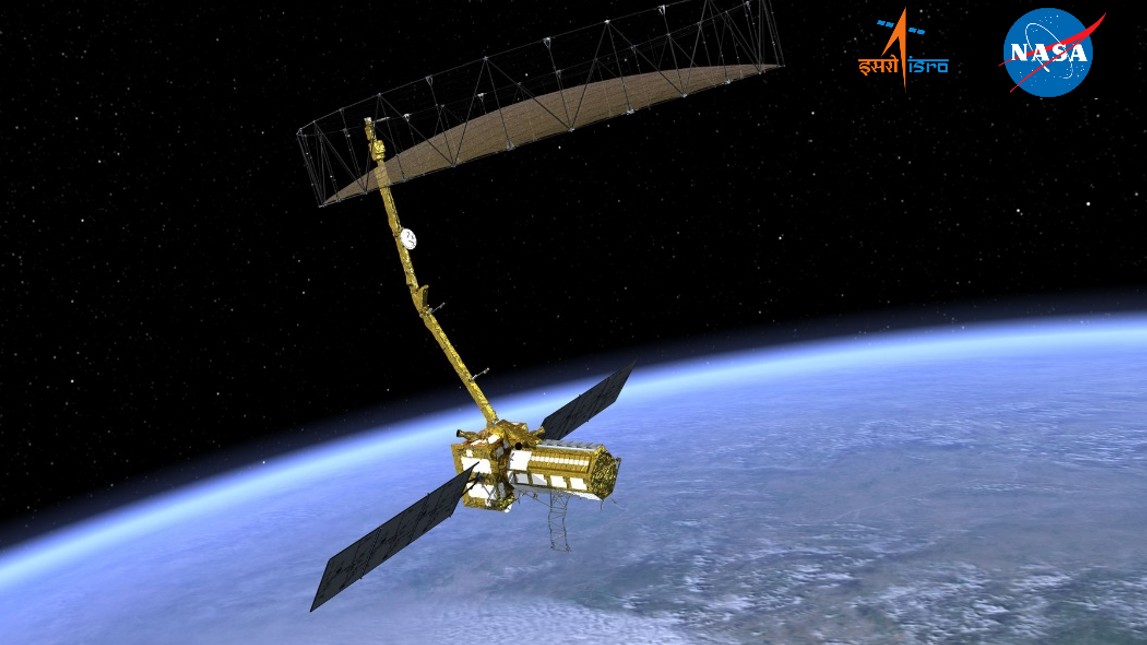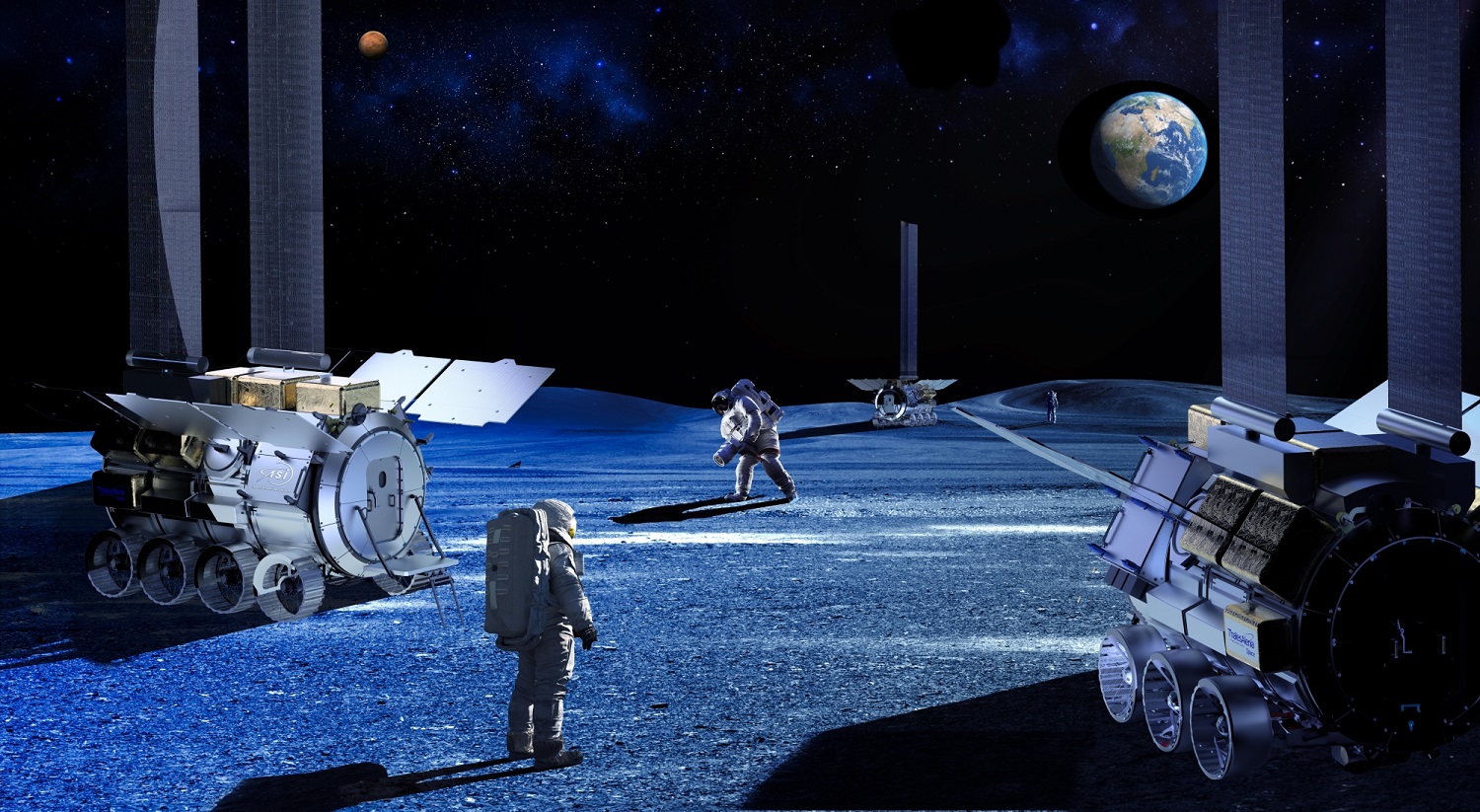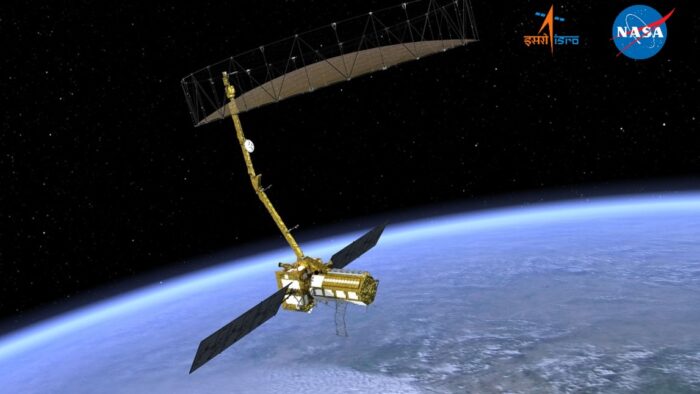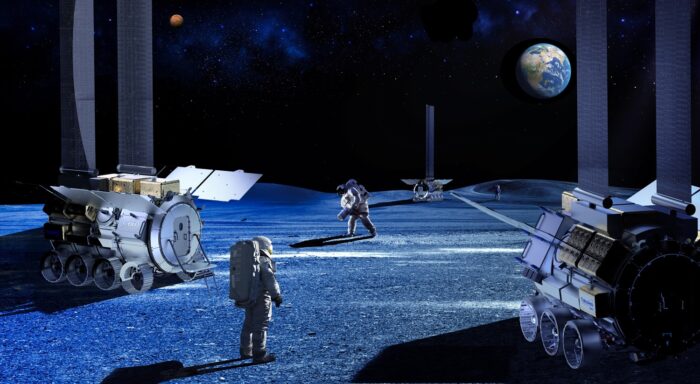President Donald Trump’s “Golden Dome” initiative marks the most ambitious U.S. missile defense concept since the Cold War. Announced as part of his second-term defense agenda, the missile shield envisions a multi-layered system that combines ground, sea, air, and for the first time, space-based interceptors to counter emerging missile threats from adversaries like China, Russia, North Korea, and Iran.
The defence architecture’s ultimate goal: to counter increasingly sophisticated missile threats from adversaries and emerging technologies like hypersonic glide vehicles. With a recently proposed price tag of $175 billion and strong backing from U.S. defense contractors, the Golden Dome raises critical questions about feasibility, legality, strategic stability, and commercial consequences for the global space sector.
Origins: From “Star Wars” to the Golden Dome
The Golden Dome draws direct inspiration from Israel’s Iron Dome, a proven but much smaller system designed to intercept short-range threats. Trump’s plan, however, is orders of magnitude larger, seeking to defend the entire continental U.S. and potentially Canada from intercontinental ballistic missiles (ICBMs), hypersonic weapons, and even space-launched attacks.
The concept also revives elements of Ronald Reagan’s 1983 Strategic Defense Initiative (SDI), or “Star Wars,” which envisioned orbital lasers and interceptors. SDI failed to materialize due to technological and budgetary hurdles. Trump’s proposal builds on that legacy but goes further by integrating next-generation technologies across domains. According to the Department of Defense, the Golden Dome will connect space-based interceptors with ground-based missile defense systems, Aegis ships, NORAD, and U.S. Space Command, creating a cohesive detection and engagement network.

“This system will be capable of intercepting missiles launched from the other side of the world—even if they’re launched from space,” Trump stated during a May 20 announcement in the Oval Office.
Technical Blueprint: Multi-Layered, Space-Driven Defense
The Golden Dome’s architecture is designed around four defensive layers:
- Pre-launch disruption: Targeting enemy capabilities before a missile fires.
- Boost-phase interception: Destroying missiles in their vulnerable early ascent.
- Midcourse interception: Engaging missiles in space, during their flight.
- Terminal-phase defense: Final attempts to intercept missiles as they near their targets.
Trump’s plan would place a constellation of satellites equipped with advanced sensors and interceptors in low-Earth orbit. These satellites would detect, track, and potentially destroy incoming missiles, supplementing existing ground- and sea-based defenses.
The Department of Defense has tasked Gen. Michael Guetlein, vice chief of space operations, to lead the project, with the U.S. Space Force playing a central role. He emphasized the growing challenge posed by modern missile systems, including hypersonic glide vehicles, multiple independently targetable reentry vehicles (MIRVs), and space-based threats. “Our adversaries are building space weapons,” Guetlein warned, citing China’s 2021 test of a hypersonic missile with orbital capabilities and Russia’s reported nuclear space-based weapon.
Budget, Timeline, and Feasibility
Trump estimates the Golden Dome will cost $175 billion and be operational within three years. Despite this ambitious goal, many experts argue that a three-year construction timeline is implausible. Furthermore, estimates from the Congressional Budget Office (CBO) suggest the project could take up to 20 years and cost between $161 billion and $542 billion over two decades, depending on the number of space-based interceptors deployed and given the unprecedented technical challenges and the need for sustained, bipartisan funding.
“We are talking something very futuristic, massively expensive, and something that has never been done in terms of just the sheer size and the technical expertise that would be involved in such a system,” said former Canadian defence minister Peter MacKay.
Strategic Implications: Destabilization or Deterrence?
Critics warn that deploying weapons in space could upend existing norms and trigger an arms race. The Outer Space Treaty of 1967 prohibits placing weapons of mass destruction in orbit, though it does not explicitly ban all forms of weaponization. The Secure World Foundation’s Victoria Samson called the initiative “a Pandora’s box,” pointing to the risk that adversaries might escalate by placing their own offensive systems in orbit or developing anti-satellite (ASAT) capabilities.
“Nobody’s supposed to be weaponizing space,” said Alistair Edgar, a political science professor at Wilfrid Laurier University. “Some people are sneaking things up there, and we condemn them when they do.”
Geopolitical Dynamics: Reactions from China and Russia
Russia and China have issued a joint statement condemning the Golden Dome as “deeply destabilizing,” warning it could provoke countermeasures and reduce the effectiveness of “mutually assured destruction,” a longstanding nuclear deterrent doctrine. China’s foreign ministry stated the plan carries “strong offensive implications” and increases the risks of militarizing outer space. Russia has suggested the project could force new nuclear arms control talks with Washington.
Industry Implications: Commercial Space Sector Impact
For the commercial space sector, Golden Dome could unlock significant contracts and research opportunities. Early contenders for system components include SpaceX, Palantir, L3Harris, Lockheed Martin, RTX Corp, and Anduril. L3Harris CFO Ken Bedingfield told Reuters, “We knew that this day was likely going to come. You know, we’re ready for it.”
While early development may rely on existing production lines, further progress will demand new systems: low-Earth orbit sensor networks, real-time command and control platforms, and high-agility interceptors. Startups and legacy contractors alike could benefit, provided they align with evolving Department of Defense procurement models.
However, potential commercial partners should bear in mind that budget uncertainty remains a constraint. The Trump administration’s proposed $25 billion “down payment” is embedded in a broader $150 billion defense authorization and spending package currently under debate in the U.S. Congress. Sustaining momentum across multiple administrations will likely require bipartisan support—something not guaranteed in today’s polarized political climate.
A Strategic Gamble with Potential Industry Upside
The Golden Dome is technically ambitious and strategically controversial. It proposes a space-integrated missile shield that could protect against an evolving threat landscape but at the risk of igniting a new era of great-power competition in orbit.
For the commercial space industry, the initiative could usher in a new wave of government investment, R&D contracts, and technology commercialization. But the path ahead is uncertain—technically complex, diplomatically fraught, and politically volatile.
As industry leaders position themselves for potential participation, stakeholders must balance security imperatives with long-term risks. The Golden Dome may define the next decade of space defense—whether by its success, its failure, or the global response it provokes.
Image credit: Lockheed Martin
Alyssa Lafleur
Alyssa Lafleur has over 10 years of experience working as a tech and science communicator in industries spanning public health, health informatics, life sciences innovation, cybersecurity, and space tech. Alyssa brings a wealth of knowledge in developing and managing communication strategies that drive value for highly technical industries with thought leadership, community outreach, and brand awareness.
Share this article:










